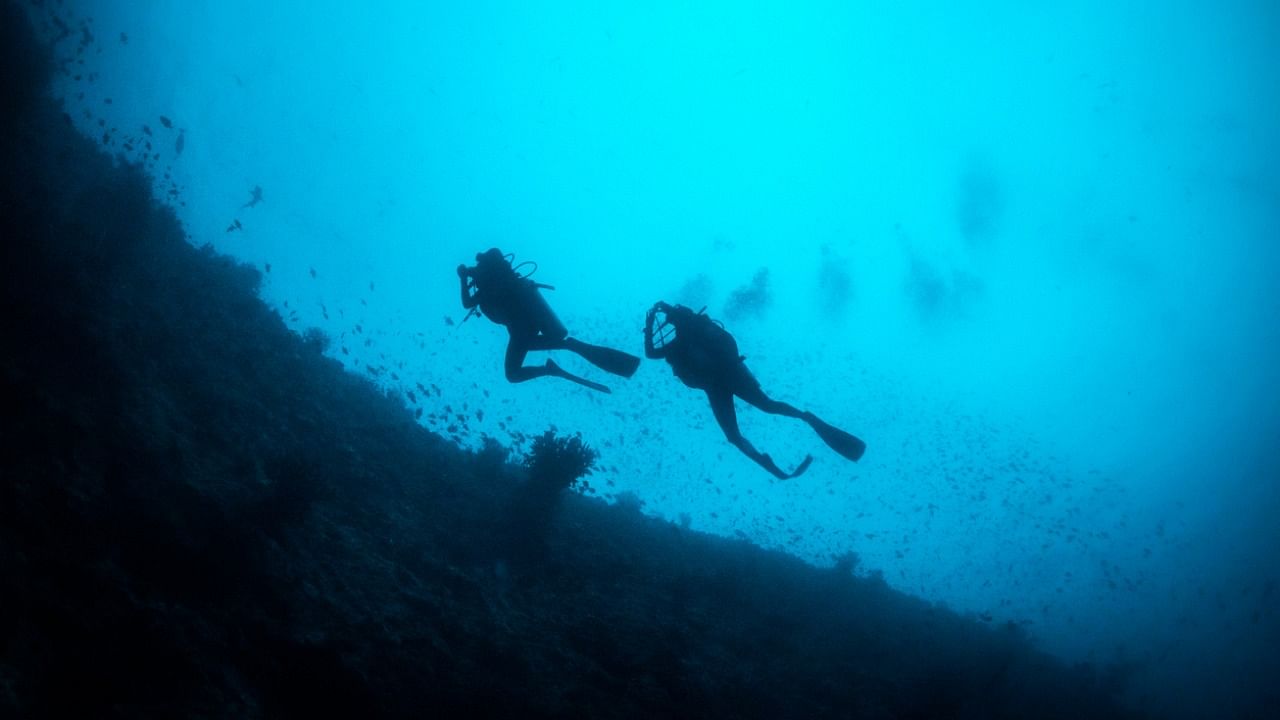
In many ways, it would be similar to a space capsule that ISRO has developed to ferry Indian astronauts to space -- but instead of going up this titanium sphere will go six km down under the ocean to search for valuables.
The Ministry of Earth Sciences has roped in space scientists to design and develop a capsule that will dive more than 6,000 mt in the Indian Ocean, carrying three men with sensors and tools to look for polymetallic nodules containing copper, nickel, cobalt and manganese worth millions.
The Union Cabinet on Wednesday sanctioned Rs 4,077 crore for the 'deep ocean mission' to scour the depth of the Indian Ocean for commercially exploring such nodules.
The mission seeks to develop technologies required for the day when the International Seabed Authority, a UN organisation, will release the protocols for commercial deep sea mining.
"We have to develop deep sea mining technologies and a manned submersible for the mission. Such technologies are strategic in nature and not available off-the-shelf. We have to develop them in-house,” M Rajeevan, secretary, Ministry of Earth Sciences told DH.
Indian Space Research Organisation and a few industries have been roped in for the manned submersible, which would be a titanium sphere capable of withstanding an enormous amount of pressure at 6,000 mt depth. It will also have an oxygen supply system, under-sea surveillance systems and electronics.
"Because of its experience of building the space capsule, we have partnered with ISRO to develop the titanium sphere. Also, ISRO has experience in designing the safety systems that would be needed in a manned submersible,” said Rajeevan.
The International Seabed Authority had allocated India a 75,000 sq km area in the southern Indian Ocean for commercial exploration of polymetallic nodules found on the ocean floor.
However, India can not start mining unless rules are framed by the authority. Absence of appropriate technologies is also a big bottleneck.
“The technologies required for deep sea mining have strategic implications and are not commercially available. Hence, attempts will be made to indigenise technologies by collaborating with leading institutes and private industries,” the Union Cabinet says in a press note.
Over the last few years, India was in talks with the US and Japan seeking technical know-how for deep sea mining and the manned submersible. Both declined.
A channel of discussion has now opened with Russia, which also possesses such technologies.
Another key component of the mission is to explore and identify hydrothermal vents along the Indian Ocean mid-oceanic ridges that are potential sites of mineral formation.
A special research vessel with instruments capable of withstanding high temperature at such vents -- nearly 500 degrees Celsius -- would be constructed at an Indian shipyard under this mission.
